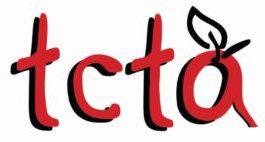TPS Bullying Policy
Regulation
STUDENT BULLYING PREVENTION AND INTERVENTION
In furtherance of the Board’s policy regarding student bullying prevention and intervention, the District shall:
1. Require students to be notified annually and new students to be notified upon enrollment of the process by which to report bullying, whether in person, in writing or anonymously;
2. Enable students to report acts of bullying to teachers, counselors and school administrators;
3. Enable the parents or guardians of students to file reports of suspected bullying;
4. Require teachers, counselors, school administrators and other school staff members who witness acts of bullying or receive reports of bullying to promptly notify school administrators in writing;
5. Require school administrators to identify the appropriate personnel to document, investigate and review all reports of bullying they receive;
6. Require prevention and intervention strategies, as described below, based on building data, as defined by Board policy, for school staff to address bullying behaviors. These interventions will be on a continuum, ranging from those aimed at prevention to those interventions that address more serious bullying behavior on a case-by-case basis;
7. Include prohibitions and guidance concerning bullying in the District’s Behavior Response Plan;
8. Require school administrators or designees to notify the parent or guardian of any student who commits a verified act of bullying and the parent or guardian of any student against whom such act was directed;
9. Require each school within the District to keep a record of verified and non-verified reports of bullying, to make such list available for District inspection and to report annually to the State Department of Education;
10. Ensure the training of school personnel to be sensitive to the interpersonal dynamics of bullying behavior so that they recognize the need to protect all students from reprisal, retaliation and false accusations.
The District’s “Prevention and Intervention Strategies” referenced above include, but are not limited to:
1. Implementation of a positive behavioral interventions and supports process or another evidence-based model approach for safe school climate or for the prevention of bullying, including any such program identified by the State Department of Education;
2. A school survey to determine the prevalence of bullying, which will take place during the second or third quarter of each school year and a summary of which will be made available to a District office designee; and
3. Establishment of a safe school committee for each school site (K-12) as mandated by the Act and the Oklahoma School Security Act. The safe school committee will consist of at least seven members that will review the survey results and reported bullying incidents and recommend strategies to prevent bullying behaviors. One member of the safe school committee must participate in the investigation of bullying reports;
4. The development, posting and enforcement of rules at each school site that prohibit bullying and establish appropriate consequences for those who engage in such acts, as defined by District policy;
5. The consistent provision of adult supervision at each school site of outdoor areas, hallways, the lunchroom and other specific areas where bullying is likely to occur;
6. Inclusion of grade-appropriate research-based bullying prevention curricula in pre-kindergarten through high school grades, as compiled by the State Department of Education and which is reported annually using a fidelity checklist to submit to safe school committee members;
7. The participation of all employees directly involved with student services in annual bullying awareness/intervention training and suicide prevention training;
8. The participation of all new employees directly involved with student services in bullying awareness/intervention training and suicide prevention training before reporting to their new positions;
9. Individual interventions for students who engaged in confirmed bullying behavior and against whom bullying behavior has been confirmed, the parents or guardians of those students and involved school staff members;
10. School-wide training related to the provision of a safe school climate;
11. The promotion of parent involvement in bullying prevention through individual or team participation in meetings, trainings and individual interventions, which may include discussion panels, safe school committees, PTSA, parent involvement facilitators and the like;
12. Referrals of students and parents to community mental health care options, as appropriate; and
13. Requesting disclosure of any information concerning students who have received mental health care for an incident that indicates an explicit threat to the safety of students or school personnel. The District will make any request for disclosure in compliance with applicable state and federal laws and regulations.
Adopted: April 2011 Page 2 of 2
